
Obviously, Disney’s Animal Kingdom never did get Beastly Kingdom… Though it probably never would’ve come anyway, the opening of the Lost Continent assured that dragons, unicorns, wizards, and Arthurian legend were dead in the water at Disney World.
Disney’s Animal Kingdom did finally gain an “imagined” creature with the 2006 opening of the Modern Marvel: Expedition Everest in Asia, featuring the infamous and mythological mountain guardian, the Yeti. Not coincidentally, the ride remains the most recent major attraction to open at a U.S. Disney Park not tied to an intellectual property.
That’s probably in part because of some magic brewing in the industry…
Potterwars

Though discussions were shrouded in secrecy, the popular theory is that, in the mid-2000s, Disney was intent on securing the global rights to incorporate Harry Potter into its theme parks. Negotiations between Disney, Warner Bros. (the films’ distributing studio) and series creator and author J.K. Rowling, were said to be pretty far along… until Rowling made some demands that Disney simply wouldn’t sign onto.
While no one involved in the alleged discussions is talking, we have our hunches.
We suspect that Rowling wanted in writing that Disney would give her Potter characters reverence and exclusivity… And one need only look at Disney’s prior treatment of George Lucas’ Star Wars to see why. Once Lucas provided Disney with the rights to Star Wars, Disney’s marketing machine started selling action figures of the Muppets dressed as Star Wars characters and had Darth Vader dancing to Michael Jackson at Disney World’s Star Wars Weekends. (Interestingly, once Disney bought Star Wars outright, such silliness was stopped immediately in favor of reverent, respectful treatment of the brand… Hmm…)
It could also have been that Rowling (rightly) refused to have her Potter characters relegated to a showbuilding at the Studios park where Disney needed the boost.
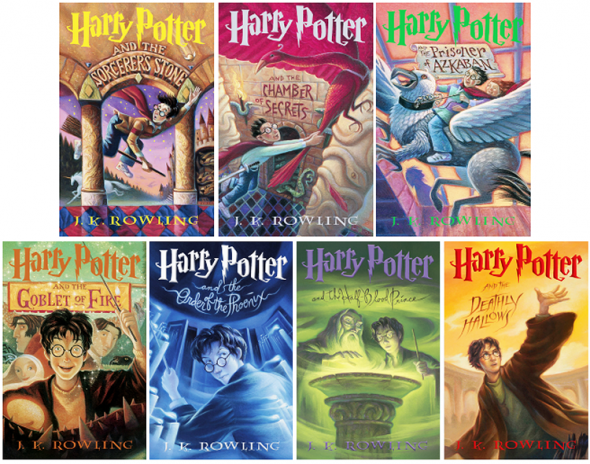
We also know that Rowling required the “real” world to stay far away from any Harry Potter themed lands (as in, no Coca-Cola in the restaurants, no LEGO sets in the gift shops, and no meet-and-greets with actors playing Harry, Ron, and Hermione), and it stands to reason that Disney balked at such a power play so antithetical to their method of operation.
Disney and Rowling apparently parted ways. Undoubtedly, Disney believed that Rowling would shop her idea around to other theme park operators before eventually finding that no one could bring her ideas to life to the level she demanded. She’d relent and come crawling back to Disney, right?
Except, she didn’t have to.
The Wizarding World: Rough Draft
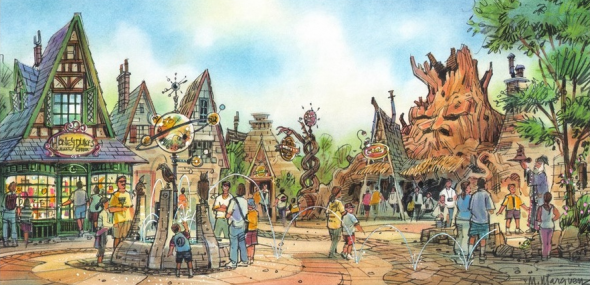
When Universal and Rowling entered into talks to bring the literary fantasy world of Harry Potter to life, it was obvious that Islands of Adventure was the place to do it. And even better, a simple redress of the Lost Continent’s Merlinwood would create the perfect spot.
The concept art found in the archives of Universal Creative reveals that these initial plans would’ve taken mainstays, sights, and structures of The Lost Continent and given them a light overlay to create Rowling’s sorcery-filled story world.
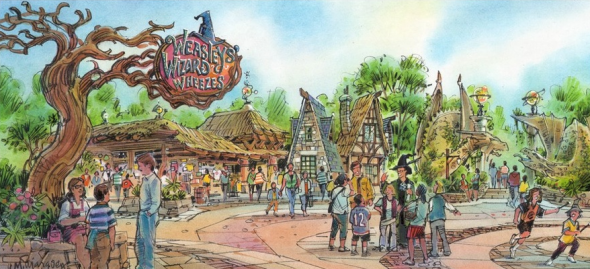
From the Enchanted Oak Tavern to the iconic entry of Dueling Dragons (now casting both dragons in stone rather than fire and ice), this Wizarding World would look familiar to frequent Universal guests, even if new roving characters and specific Potter merchandise would be all new.
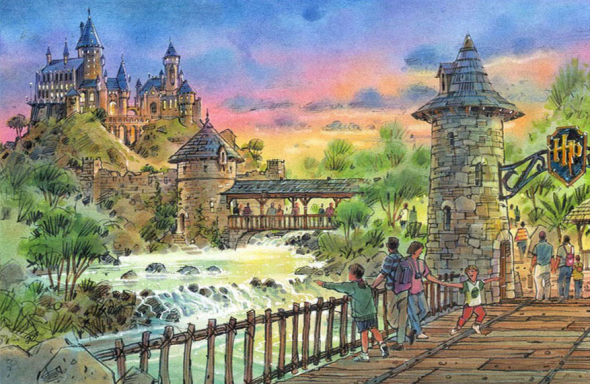
A parcel of land within Merlinwood had even been set aside for a cutting-edge E-Ticket ride based on the 2004 film Van Helsing, but when the movie failed to make an impression, the ride (and its cutting edge robo-arm ride system) were cancelled, leaving the perfect plot of land for Hogwarts to rise over Merlinwood.
But Rowling must’ve pushed farther.
Hogsmeade Rises
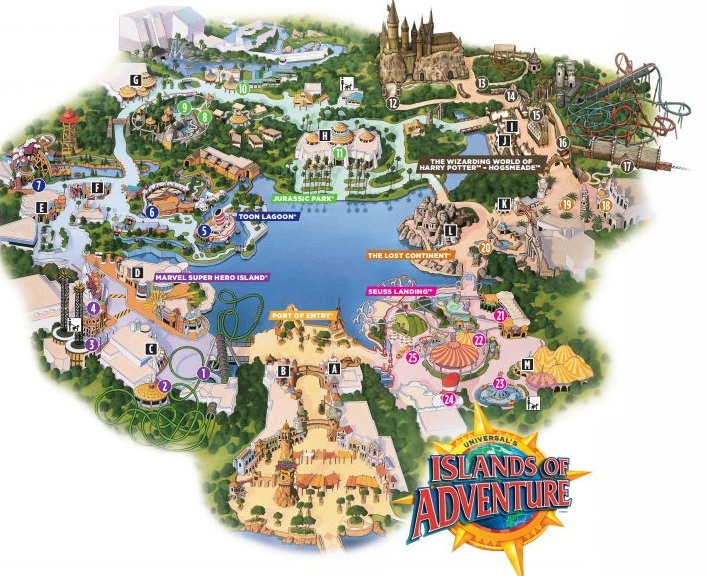
With Universal, Warner Bros., and Rowling on board with the concept. The Wizarding World of Harry Potter – an entire seventh island at Islands of Adventure – was announced. And this new Wizarding World would overtake the Merlinwood section of the Lost Continent entirely… But rather than absorbing it, Potter would level it. A bypass bridge was constructed between Sinbad’s Bazaar and Jurassic Park as Merlinwood disappeared behind construction walls never to be seen again.
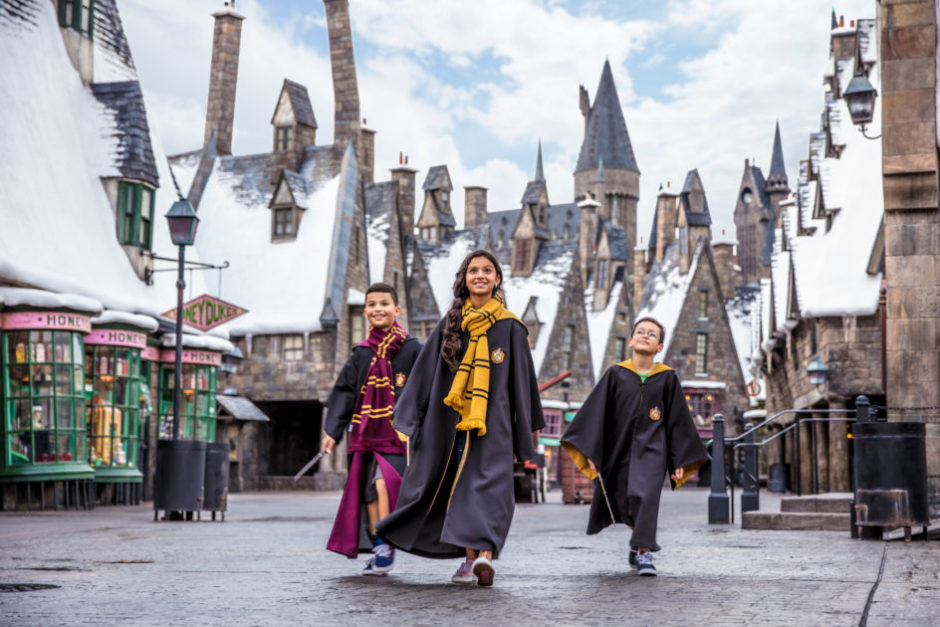
In its place, the Scottish village of Hogsmeade would rise, recreated painstakingly from its look and feel in the Harry Potter film series. The snowcapped town would include only shops and restaurants featured in the “real” Hogsmeade, all built to their “real life” scale rather than to theme park proportions.
The unimaginable creative choice (which could’ve been another sticking point for Disney) meant that the cramped, tiny, bauble-filled shops are authentic. They feel as if you’ve stepped into the “real” Hogsmeade, not the up-sized theme park version of it.
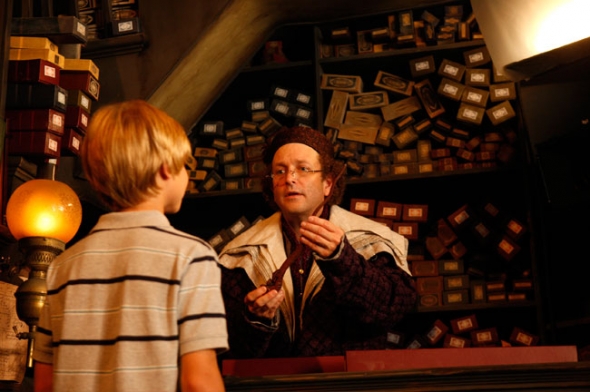
So believable and sought-after is the experience, guests regularly wait in lines to get into gift shops to buy interactive wands, fish and chips, house robes, Butterbeer, and other in-universe goods… without a LEGO kit or Harry Potter action figure in sight. This new idea – of recreating a physical place seen on screen to exhaustive detial – would, of course, become the de facto M.O. of theme park expansions across the world thereafter; an age defined not by “Ride the Movies” E-Tickets, but by living lands that allow guests to inhabit the worlds they love; to eat, shop, and explore just like their favorite characters do.
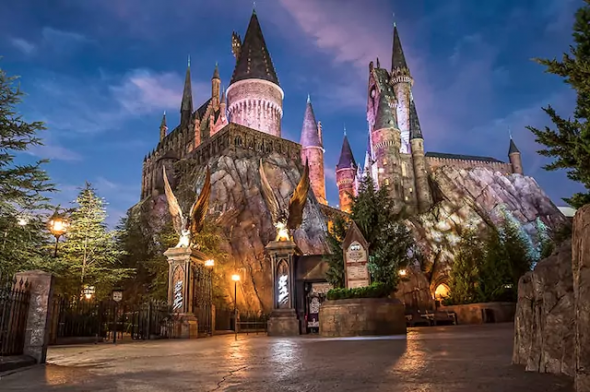
Still, the anchor of the Wizarding World was Harry Potter and the Forbidden Journey, a groundbreaking dark ride that somehow exceeded the technological prowess of the unbeatable Amazing Adventures of Spider-Man a decade earlier. Using the technology and space once planned for a Van Helsing ride, Forbidden Journey also added another world-class dark ride to the park – featuring all manner of mythological creatures from acromantulas to the dreaded Dementors… oh, and dragons.
Speaking of which, as for the remains of Merlinwood…
Merlinwood, in memoriam
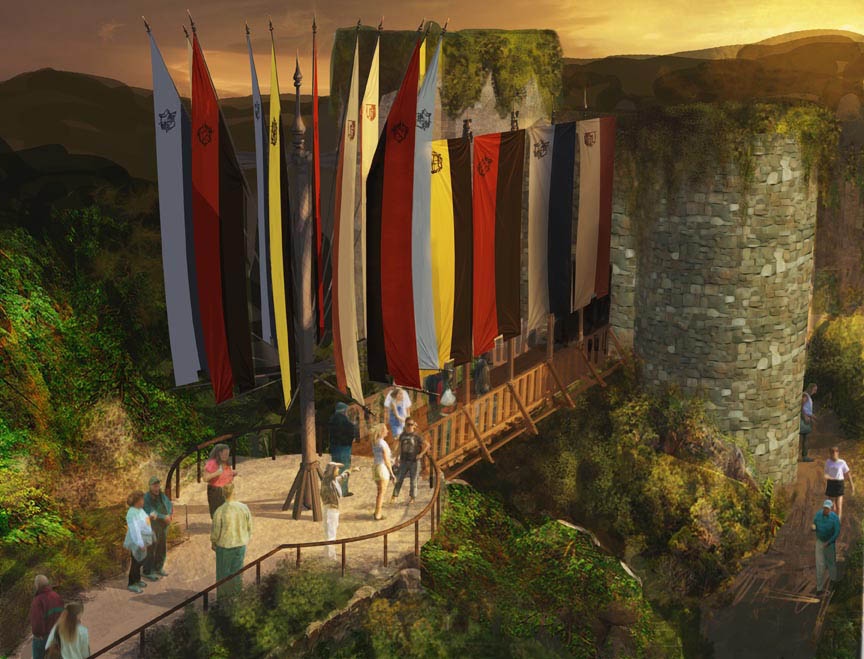
Dueling Dragons was absorbed into the new mythos as Dragon Challenge (loosely connected to a Triwizard Tournament task in The Goblet of Fire). The skewered knights were removed from the queue, as were any references to Merlin or fire & ice. No one would’ve argued that the coaster or its queue looked custom-built for the new Wizarding World (after all, they weren’t), and it’s certainly true that the two bare steel coasters on the edge of Hogsmeade were wildly out of place in this next generation “living” land. But why would Universal close a perfectly good $50 million ride?
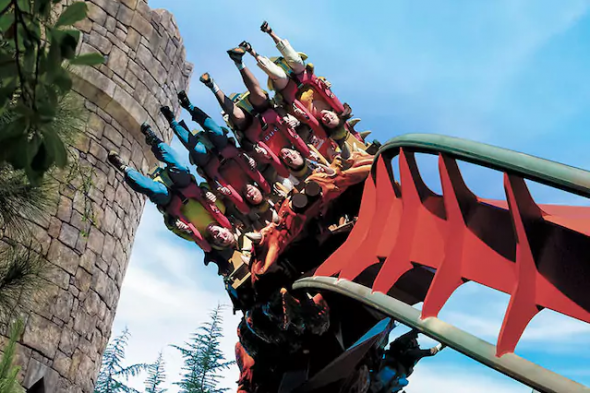
Unfortunately, a 2011 incident – after the coasters’ renaming and absorption into Potter – forced Universal’s hand, and they announced that the dragons would “never duel again,” meaning the two trains would henceforth dispatch at opposite intervals.
The dragons only lasted another six years in their neutered form before Universal (admittedly, wisely) decided to scrap the steel behemoths entirely in favor of a well-themed, purpose-built Potter ride. They took their final flights on September 4, 2017 to be replaced with the (much more “living land” appropriate) Hagrid’s Magical Creatures Motorbike Adventure. It was the first time ever that a B&M steel coaster (much less two at once) had been permanently removed. Except for a playful “Easter egg” in the queue for the replacement ride, the Dragons were dead, killing off the last remnant of Merlinwood (and by extention, Beastly Kingdom’s DNA)… Well, almost…
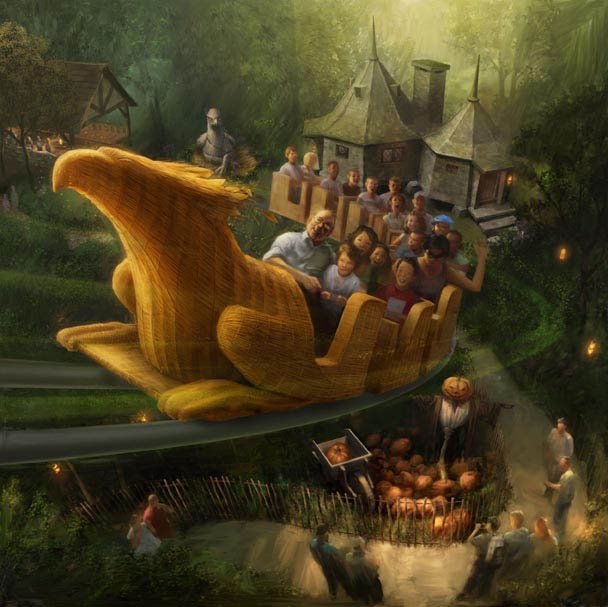
After all, though it was slightly relocated, the Flying Unicorn family roller coaster remained as Flight of the Hippogriff, simply equipped with new wicker-style train design and an animatronic hippogriff along its course. The ride was now a “Care of Magical Creatures” lesson for first years set beside the charming hut of Hogwarts’ groundskeeper Hagrid.
In other words, if you follow the thread here, it very well could be that – like a two decade game of Telephone – Disney’s plans for a hedge maze walkthrough to encounter an animatronic Unicorn eventually resulted in Universal’s family coaster through a pumpkin patch to encounter an animatronic Hippogriff… a lone concept from Beastly Kingdom still alive in Orlando.
Meanwhile…
You can imagine the malaise that must have befallen Disney Imagineering as designers watched Universal Creative run away with the Wizarding World of Harry Potter. Universal hadn’t just crafted a spectacular land that would make Islands of Adventure a must-visit for millions of Harry Potter fans and Orlando visitors; they’d fundamentally reshaped what the future of theme parks would look like with its “living land” model. For the first time, Disney was playing catch-up with its competitor.
That’s why – if you ask insiders – just as Universal was putting the finishing touches on Hogsmeade and stocking its store shelves with robes, chocolate frogs, quills, and wands, Disney executives made a knee-jerk decision to license something – maybe, anything! – “Potter-sized.” And in 2009, that was James Cameron’s Avatar, which had just become the highest-grossing film ever.
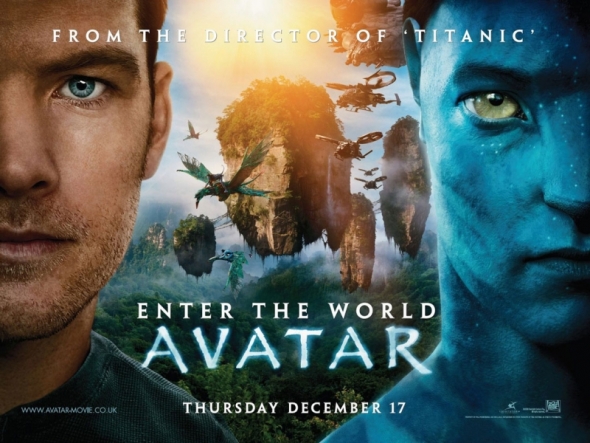
What Disney couldn’t have foreseen is that Avatar burned bright and fast, breaking box office records before essentially disappearing from pop culture without a trace. Largely fueled by the “gotta see it” viral appeal of being the first modern wide release (higher ticket price) 3D film (remember that era?), Avatar had indeed become a $2 billion earner, but had left practically no footprints in pop culture.
In fact, the most memorable things about Avatar were probably the decade of stinging commentary left in its wake dissecting the puzzling cultural question as to why no one cares about the highest grossing film ever, and Cameron’s laughable and pop-culture-pun worthy promises that, like it or not, no less than FOUR sequels are on the way… Whoops…

Maybe that’s why development on the first (and to date, only) of Disney’s “global” Avatar attractions seemed to progress in fits and starts, with more than a few rumors of outright cancellation – especially as Avatar’s star faded. Finally, the “temporary” Camp Minnie-Mickey meant to hold Beastly Kingdom’s place survived for 16 years (lasting longer than Epcot’s Lost Legend: Horizons or Universal’s Kongfrontation, if you’re keeping track) before closing forever on January 5, 2014.
Even if most fans would probably have preferred if Disney hadn’t licensed Avatar to begin with, the project progressed with Joe Rohde himself at the helm. And boy should we be grateful.
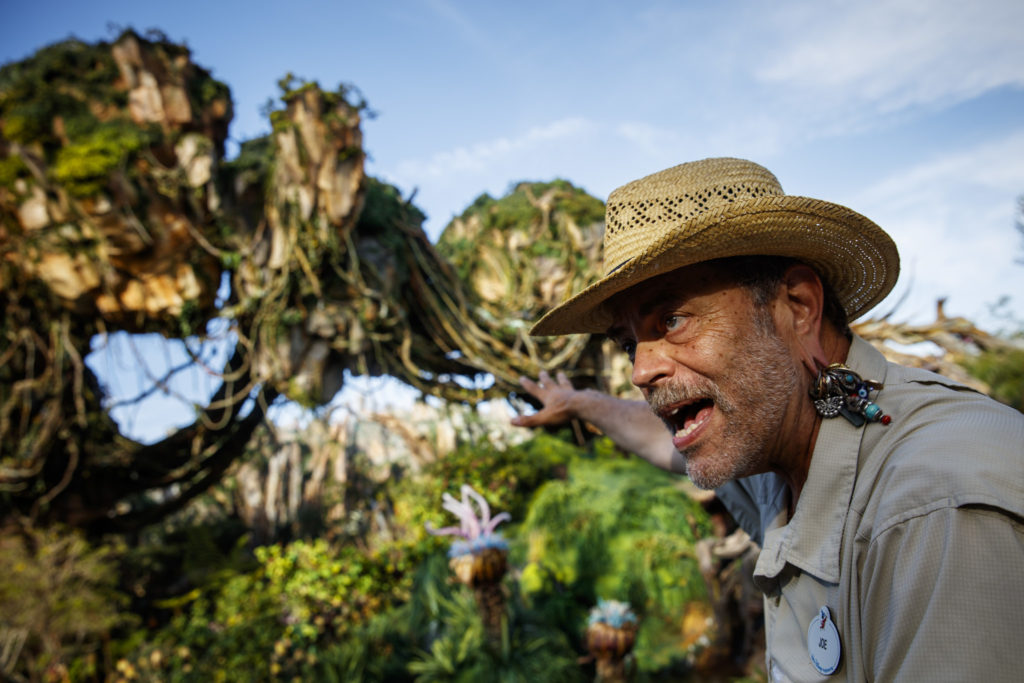
Pandora – The World of Avatar finally opened in 2017 – one of many “living lands” Disney has built in the last decade, each following shades of the Wizarding World formula. Does Pandora suffer from its source material’s lack of pop culture permanence? No! That’s becayse designers brilliantly made the CGI moon incarnate in a real, physical, Imagineer-made world – the Valley of Mo’ara – and concocted an entire mythology separate from the film (and thus, requiring little to no understanding of its setting or story).
To be clear, the land is elaborate, detailed, beautiful, and astounding, filled with unimaginable “natural” wonders from bioluminescent plants to floating mountains. It’s wild and awe-inspiring and breathtaking. Pandora is the next evolution of the immersive, photo-realistic environment pioneered by Disneyland, reinvented in Animal Kingdom, and applied to stories in Islands of Adventure and its “living land,” the Wizarding World.
Is Pandora a better land tan Beastly Kingdom would’ve been? By most every account, yes. On an unprecedented scale, Pandora is, in many ways, among the very, very best of the industry’s new “living lands” era; Beastly Kingdom would’ve merely been a “cool” land born in the styles of yesteryear. In other words, everything probably worked out the way it should’ve.
Threads converge

In case you weren’t keeping track: Disney Imagineers developed Beastly Kingdom. When it was canned, elements of the concept may have migrated to Universal Creative, who could’ve adapted it into The Lost Continent. Then, Disney’s alleged loss of Harry Potter put the Boy Wizard in Universal’s hands, replacing part of the Lost Continent with Hogsmeade… which in turn made Disney license Avatar and build a land based on it where Beastly Kingdom would’ve gone!
If you follow that logic, it stands to reason that if Disney had just built Beastly Kingdom to begin with, the Islands of Adventure we know, the Wizarding World of Harry Potter, and Pandora might never have even happened… And by the way, all of us would be worse off without Hogsmeade and the Valley of Mo’ara.

In any case, it’s evidence of an intertwined destiny; a shared story that permeates the entire industry, expanding well beyond this park or that park. Imagineering is a complex thing. Turns out, “imagined” animals are, too.

Thank you so much for reading. Now, it’s your turn to join the story. If you enjoy spending time falling down the “rabbit hole” of Park Lore’s in-depth, ad-free, member-supported stories, consider becoming a Member for as little as $2 / month.
Members can unlock rare concept art in every tale, reveal attraction audio streams in select stories, gain access to over a hundred exclusive articles in our quick-read Extra Features and in-depth Special Features collections, gain exclusive podcast extras, and receive an annual member card and merch in the mail! (Plus, y’know, supporting research-based, ad-free, clickbait-free, in-depth theme park writing!)
Now we want to hear from you. What do you remember of the Lost Continent? Was this oversized themed land really Disney-quality, or have our memories been blurred by time? What do you think is the next step for the remains of this land? Should it be overtaken by Potter? Nintendo? Lord of the Rings? Or do the original stories and myths of the gods have a place in a park otherwise packed with intellectual properties? What other closed classics and fan favorites would you like to see our Lost Legends series cover?


